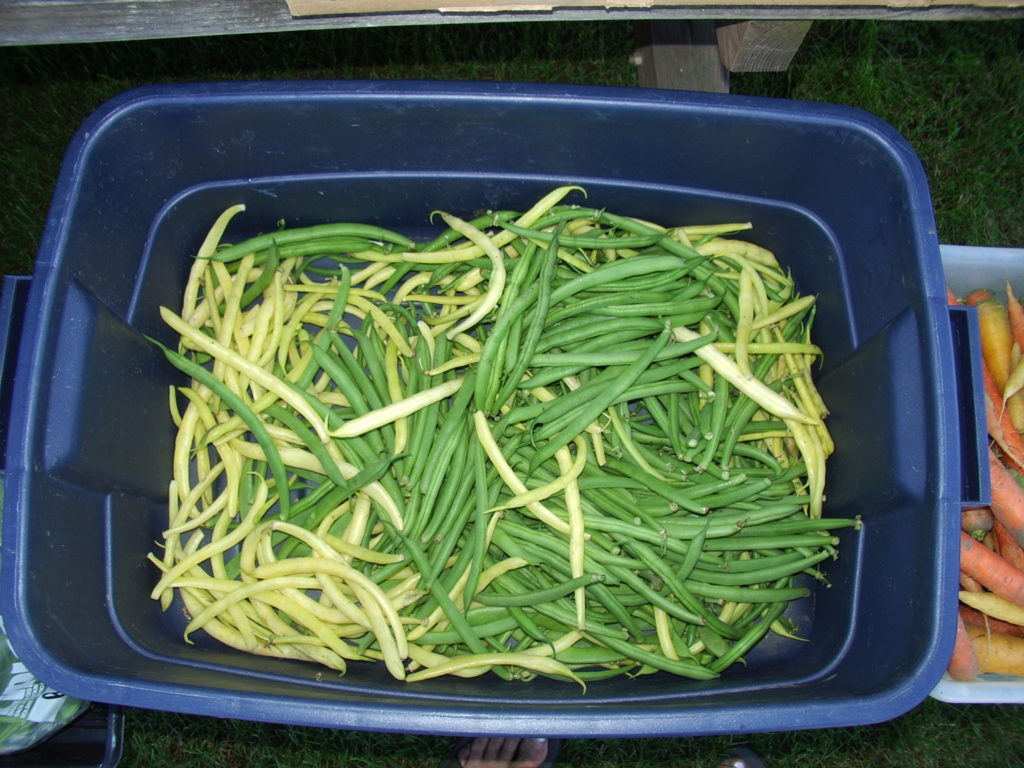The difference between a fresh green bean and a canned one is huge. But green beans (snap beans) aren’t the only kind of bean you can grow in Alaska. Runner and fava beans also do very well and you can even grow beans for the bean itself, although that requires extra patience, time, and dedication.
-

Fresh-harvested green and yellow wax beans.
Bean terminology and categories can be overlapping and confusing. For instance, a snap bean could be a bush bean or a pole bean and could also be grown just for the beans. Runner beans, a different species, can be grown with the intent of eating the entire pod, just the bean, or as an ornamental — and in the U.S. you’ll often find the seeds categorized under flowers rather than with beans in seed catalogues. Like pole beans, they are climbers and are either characterized as half-runner or runner beans. Further, fava beans are even more different and are a different genus and species than beans and runner beans.
Common beans (Phaseolus vulgaris), as you might expect, are the most commonly grown bean in Alaska. There are varieties that only get about 2 feet tall (bush beans) and ones that climb high (pole beans). Sometimes the entire pod is eaten (green or snap beans) while sometimes just the bean is eaten. There are some that produce tasty pods and beans while others are produced mainly for one or the other stage. Usually in Alaska, common beans are grown with the intent of eating the whole pod because it takes fewer days to mature — between about 50 and 60 days. Tack on at least a month or so if you want to grow them for dried beans. Continue reading